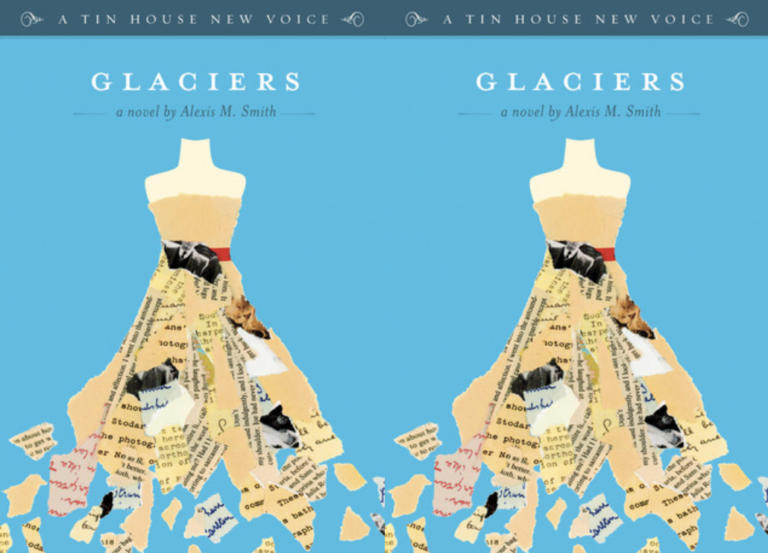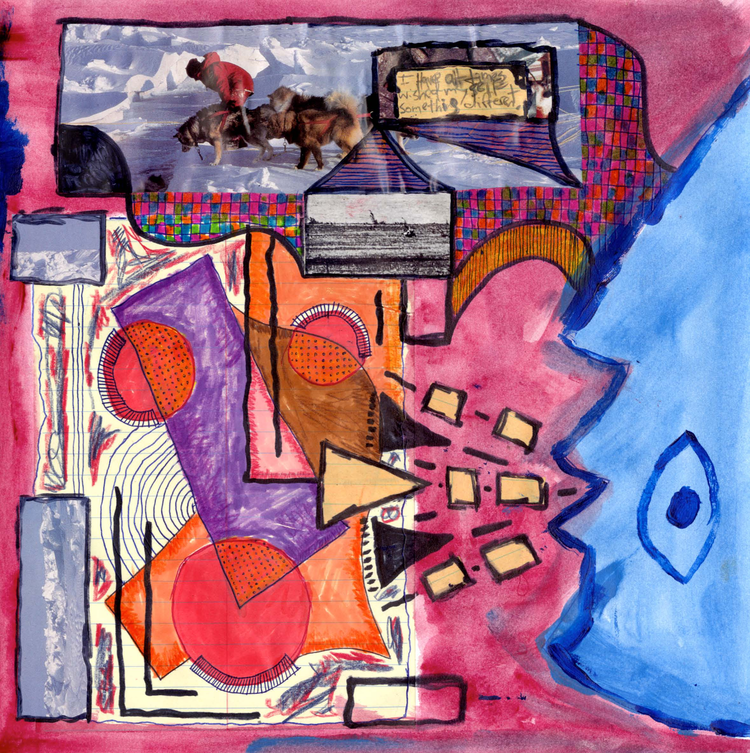“Pineapples Don’t Have Sleeves”: On Assessing Absurdity
In the days immediately following my last post, in which I stumbled semi-sensically through the difficulties of assessing images that are designed (at least in part) to resist explanation, Facebook lit up with a series of articles about a talking pineapple that recently appeared on a New York Public Schools System standardized test, much to the confusion of test-takers and to the ire of standardized testing opponents. I couldn’t have been more pleased.
Or more irritated. The pineapple in question was the central character in a parody of Aesop’s “The Tortoise and the Hare,” originally written by Daniel Pinkwater (who is, I should say, one of my childhood heroes) and then adapted significantly by Pearson’s test writers and administered to 8th-graders. In the wake of controversy surrounding this test, New York’s Department of Education has made the text of the story and its associated questions public online, but the gist is this:
A pineapple challenges a hare to a race. The other forest creatures are confused: pineapples can’t move, after all… everybody knows that. So a moose suggests that the pineapple must have “a trick up its sleeve,” otherwise it wouldn’t have made the challenge. A crow agrees with the moose. But an owl protests, “pineapples don’t have sleeves.” The race begins anyway and the forest creatures, who seem to have agreed with the moose and crow that the pineapple must have a secret plan, cheer for the pineapple. However, the pineapple doesn’t move, and before long the hare has crossed the finish line. The forest creatures eat the pineapple, and the moral of the story is explicitly stated at the end of the fable: “pineapples don’t have sleeves.”
“The Hare and the Pineapple” is followed by a series of multiple-choice questions, most of which have answers that few would argue are problematic, but some of which are a little trickier. One of the latter examples goes like this: “The animals ate the pineapple most likely because they were… A) hungry B) excited C) annoyed D) amused.” And another allegedly problematic question is written as follows: “Which animal spoke the wisest words? A) the hare B) the moose C) the crow D) the owl.”
Reactions to the story and test have fallen into one or both of two camps: 1) the story is absurd, and therefore nonsensical, and so it has no business being on a test, and 2) standardized testing itself is useless because it presumes the existence of an “objective reading,” and “The Hare and the Pineapple” is simply an obvious and exaggerated example of how all stories are open to multiple interpretations.
What everyone seems to agree is the story doesn’t belong on the test, possibly because the test doesn’t belong in the world in the first place. Even Pinkwater himself, when questioned by The New York Times, responded that “the test-makers had turned a nonsensical story into a nonsensical question for what he believed was a nonsensical test.” The New York Public School System, for its part, immediately apologized, rolled over, and announced that the questions wouldn’t be graded, and the story would not appear on future tests.
These two conclusions, as well as the conciliatory actions of the school system, are shortsighted and stupid for a number of reasons. For starters, the story may be silly but it isn’t nonsensical in the least. Rather, for the most part it alternates between hyperbole and a rather tired form of “opposite” logic—what Matthew Zapruder, in a 2010 interview regarding surrealism, likened to a monkey wearing a business suit: there’s nothing surreal or absurd about it, really; its logic is disappointingly easy to understand.
Anyone familiar with “The Tortoise and the Hare” (which I think we can presume most 8th-graders in New York would be, though the story is by no means ubiquitous in non-Western cultures) would know that in the original story, the tortoise wins because of its perseverance, while the hare loses because of its arrogance and its tendency to be distracted. The explicit moral of that tale is “slow and steady wins the race,” but another lesson of the story is that things aren’t always as obvious as they first seem: a tortoise can beat a hare.
In the testmakers’ bastardized version of Pinkwater’s story (the original featured an eggplant instead of a pineapple and the moral of the story was “never bet on an eggplant”), we are presented with a character even more hyperbolically destined to lose than the tortoise: a pineapple doesn’t even have legs. Rather than betting on the hare, as they do in Aesop’s original fable, the forest animals do just the opposite: they follow an anthropomorphically human course of second-guessing: the obvious winner is the hare, so the real winner must be the pineapple! But they are wrong: pineapples don’t have sleeves; pineapples can’t move, much less race. The hare wins; both the outcome and the implicit moral are exactly the opposite of Aesop’s original: sometimes things are exactly what they seem.
What’s nonsensical here, really? The premise that a pineapple can talk? Or that pineapples might be able to run? Or that animals, or for that matter pineapples, could be capable of complex reasoning? Any number of fairy tales and fables have equally implausible premises, but that’s just a part of how one reads fiction: you take untrue premises at face value, and proceed from there using the internal logic of the story. Nobody would object to “Hansel and Grettel” by proclaiming, “This is absurd! Witches don’t exist! And you can’t live in a house made of candy—it would dissolve in the rain!” and nobody would dismiss the comprehensibility of Little Red Riding Hood because wolves are incapable of speech and a small girl could never survive being chewed up and partially digested by a wolf, no matter how valiant and handsome and quick-acting the hunter who chops the wolf open at the end of the tale. Nobody throws up their hands and screams, “the stomach of a single wolf could never possibly contain two full human beings!”
Are the two contested questions above really so opaque, or were the students simply thrown off by a story with which they were not already familiar, and which followed a logic of its own devising? Probably neither… kids are intuitive (much more-so than most adults, in my experience), and this doesn’t give them enough credit: rather, they likely picked up on the story’s irreverence toward the very ideas of deduction and morality, which made it more difficult for students to deduce answers or determine a moral. Many articles have suggested that students hesitated to choose the owl as “the wisest” precisely because an owl is a well-known symbol of wisdom, so they felt the answer was probably not “the owl”… the students fell for the same second-guessing that defeated the forest creatures in the story. But wisdom is a form of intelligence, it’s a form of foresight and/or “being right,” and the owl is the only character in the story who was right: pineapples don’t have sleeves, so they can’t have anything “up” their sleeves. A reader properly trained to evaluate a story by its own internal logic—even an eighth grader—would be able to puzzle this out.
Don’t we want to present our children with questions that challenge their lines of reasoning? If the problem is simply that this story didn’t belong on the test, think about how that would change the public education system: it would suggest that a story which operates by a logic separate from that of the real world is not worth reading, or interpreting. It would mean any and all Sci-Fi or Fantasy writing would be unworthy of serious consideration, and forget about more “literary” examples of difficult-to-interpret art-making… nobody would read Kafka or Borges or Donald Barthelme ever again. So I feel that if we are going to test at all we need to put stories like “The Hare and the Pineapple” on our tests.
Which leaves us with the other primary reaction: standardized testing of literature and reading comprehension is idiotic by nature; it presumes an objectively correct answer when the very act of literary interpretation is subjective. I agree with this reaction, for the most part. But I’m also a pragmatist; I’m not some hippie-dippy anarcho-syndicalist Montessorian (even if I did attend Hampshire College, which has no grades and no majors), and I think that it really does benefit our students and improve education-at-large to evaluate students in relation to one another, however imperfect that system of evaluation may be.
So, because I am all-knowing and totally willing to tell the world what’s right and what’s wrong as if I have any authority at all on anything ever, here’s the solution I propose:
Keep standardized tests, and keep stories like “The Hare and the Pineapple” on them. We need both; both enhance students’ quality of learning and our ability to assess it. But we need to change the way we grade standardized tests. Just as “poetic images” can be evaluated in part by their relative distance from the subject of a poem, we can put multiple-choice answers on a spectrum from wrong-to-right; we do not have to buy into the idea that anything not-right is “wrong” (or for that matter the inverse), just as we don’t have to buy into the idea that any poetic image without an explainable relationship to the subject of a poem is “nonsense.”
In the two most-contested-questions cited above, I don’t think it’s difficult to put the multiple-choice answers on a spectrum of more-correct to less-correct. Who is the wisest animal? Well, the crow and the moose are equally less-wise, because their over-thinking proved unsuccessful at deducing the winner. The hare felt confident that it would win, but didn’t express why, so it is slightly more right. And then the owl was able not only to predict the winner, but also to explain why the hare would win, succinctly: “pineapples don’t have sleeves.” The owl is the most wise; “the owl” is the most-right answer.
The same goes for “The animals ate the pineapple most likely because they were… A) hungry B) excited C) annoyed D) amused.” There’s no indication whatsoever in the story that the animals were “excited” or “amused”; once the race began, events played out in the most banal and boring way possible. So those are equally the most-wrong answers. “Hungry” isn’t the worst answer, because at least hunger is a plausible reason for eating (whereas excitement and amusement are not… “that’s so funny!… I need a snack.”) But “annoyed,” really does seem like the best answer: “hunger” was never an element in the story, and if the animals were annoyed by the pineapple’s inability to live up to their expectations, they may have eaten it as punishment; it can be read as an execution.
Even this method of evaluation is imperfect, but at least it more accurately mirrors the way we assess a person’s intelligence in the real-world… you don’t have to be right all the time to be smart, you just shouldn’t be totally wrong all the time, and your line of reasoning should follow one form of logic or another. Moreover, assessing test answers in this way is well within the bounds of practicality: increasingly, we live in a world where companies like Facebook and Google are able to determine who we are and what we like based on complicated mathematical algorithms. It’s time that the way we evaluate standardized tests adapts similarly: no “right,” and no “wrong”—which seems like a holdover from the archaic, punch-card, zeros-and-ones days of computing—just an evaluation of consistency in the way-of-thinking of the test-taker, weighed against the way-of-thinking of the majority of their immediate peers.
So: Yes to absurdity! But yes to standardized testing, too… brought to you by Google, not Pearson’s.


